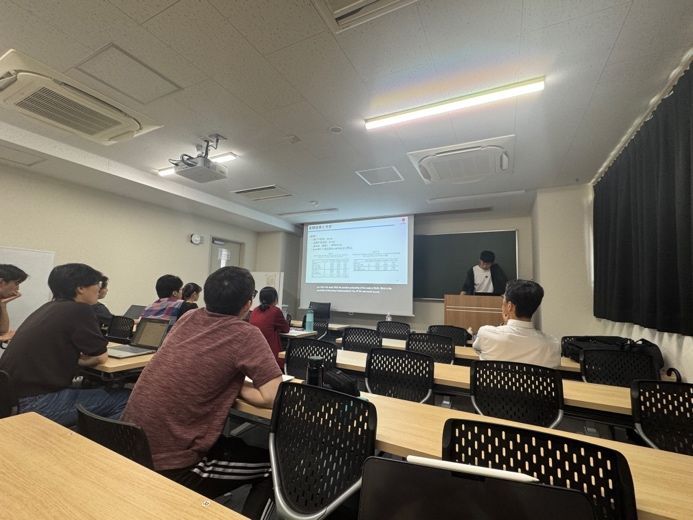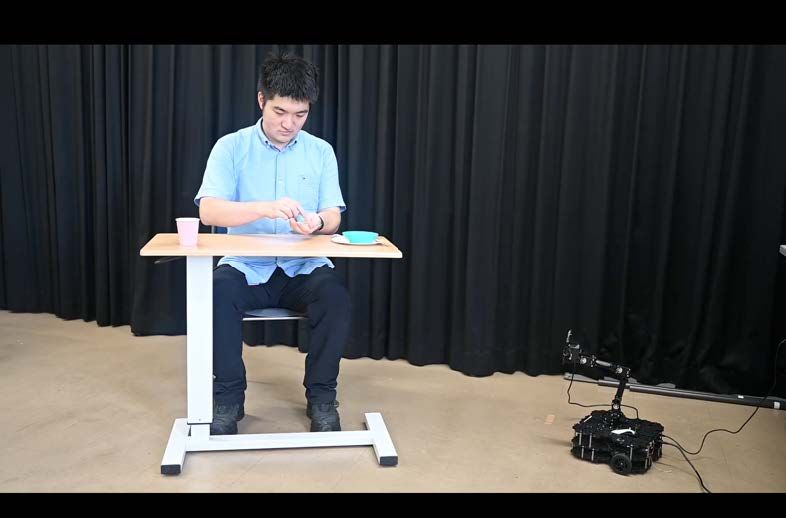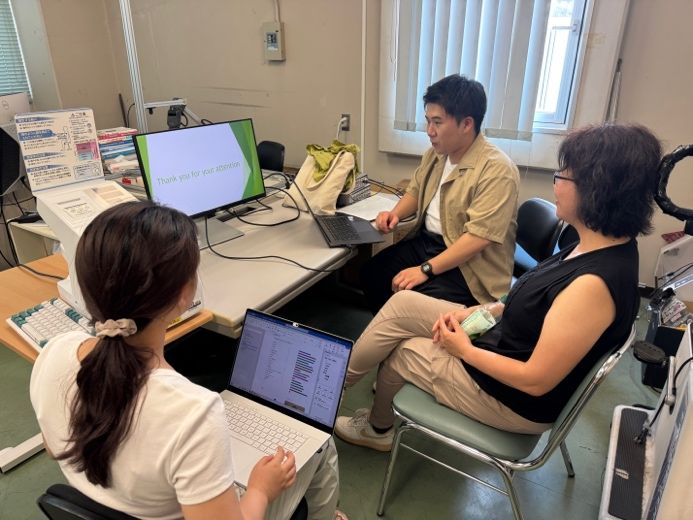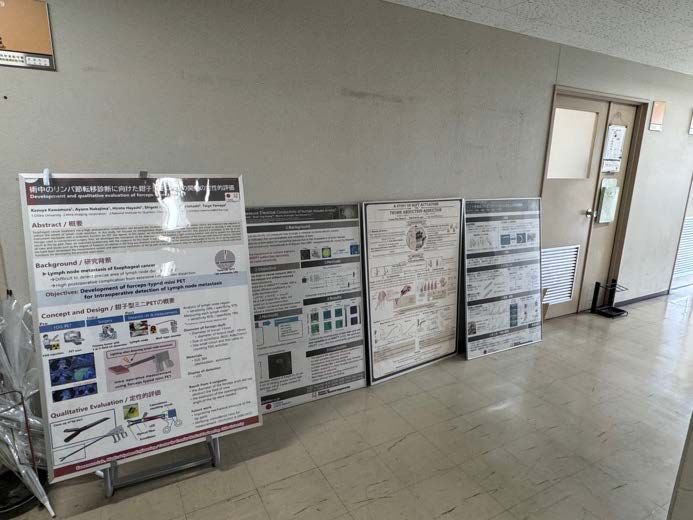2024.06.18
International research exchange camp-PhD student: 李翊駿 / Exchange location: Japan
《 Training Process》
With the global aging population and the rising prevalence of dementia, dementia has emerged as a major challenge in public health and social care. According to projections from
the Global Burden of Disease Study 2019, there were approximately 57.4 million individuals living with dementia worldwide in 2019, and this number is expected to increase to 152.8
million by 2050—an alarming growth of 166% (Nichols et al., 2022). In rapidly aging societies such as Japan and Taiwan, the growth of the dementia population will exert significant
pressure on healthcare and long-term care systems. Against this backdrop, interdisciplinary research that integrates design and medicine to improve the emotional well-being and quality
of life of older adults with dementia has become an urgent academic and societal concern.
Building on the progress of last year’s research, I will continue my exchange research program at the Center for Frontier Medical Engineering, Chiba University, with the following training objectives:
(1) Advancing Doctoral Research
The doctoral research centers on Interactive Reminiscence Design (IRD), exploring its potential for enhancing emotional support for older adults with dementia. Leveraging Chiba
University’s expertise in medical engineering and home-care robotics, the study seeks to integrate physiological data and algorithmic analysis to construct an interdisciplinary
framework for emotion evaluation, thereby validating the effectiveness of nonpharmacological interventions.
(2) Interdisciplinary Collaboration and Technical Exchange
The Center for Frontier Medical Engineering hosts two research groups, with the one I joined primarily dedicated to technologies for eldercare. Through collaborative research at
the center, I have the opportunity to engage with domains such as home-care robot design, radar-based sensing technologies, and intelligent healthcare system development, thus
broadening my interdisciplinary perspective at the intersection of medical engineering and interaction design.
(3) Practical Observation and Field Research
Beyond academic engagement, this exchange emphasizes field observation of Japan’s eldercare system, including visits to day-care centers and institutional care facilities. These onsite
studies allow for comparative analysis of dementia care practices in Japan and Taiwan. The observations and exchanges will contribute to the accumulation of valuable fieldwork
experience and serve as a reference point for future research on eldercare issues.
《Learning the Principles of Permaculture Sustainable Living》
This was my second research residency at the Center for Frontier Medical Engineering, Chiba University. Given my prior familiarity with the institution and laboratory environment,
I was able to quickly integrate into the lab’s daily operations and research activities immediately after arrival. In contrast to my first residency, which largely focused on
adaptation and preparatory work, this exchange emphasized advanced algorithmic research for physiological data analysis, with the aim of deepening my doctoral dissertation
on Interactive Reminiscence Design (IRD) and its potential to support the emotional wellbeing of older adults with mild dementia.
From a research perspective, I extended the preliminary experiments conducted earlier in Yunlin, Taiwan, where an interactive reminiscence game—designed around a 1950s
Taiwanese kitchen—was tested with older adults diagnosed with mild dementia or mild cognitive impairment. These earlier studies yielded both physiological data and qualitative
transcripts. During this residency, the focus shifted toward refining methods of physiological signal analysis, particularly the feature extraction and noise reduction of heart
rate variability (HRV) and electrodermal activity (EDA). Moreover, I explored the use of linear mixed-effects models for cross-participant comparison, thereby improving both the
accuracy and statistical reliability of the findings. Through sustained exchanges with the
laboratory’s researchers, I was able to make meaningful progress in aligning physiological data with qualitative observational codes, thereby establishing a more robust framework for cross-validation.
pictures:




Back +
With the global aging population and the rising prevalence of dementia, dementia has emerged as a major challenge in public health and social care. According to projections from
the Global Burden of Disease Study 2019, there were approximately 57.4 million individuals living with dementia worldwide in 2019, and this number is expected to increase to 152.8
million by 2050—an alarming growth of 166% (Nichols et al., 2022). In rapidly aging societies such as Japan and Taiwan, the growth of the dementia population will exert significant
pressure on healthcare and long-term care systems. Against this backdrop, interdisciplinary research that integrates design and medicine to improve the emotional well-being and quality
of life of older adults with dementia has become an urgent academic and societal concern.
Building on the progress of last year’s research, I will continue my exchange research program at the Center for Frontier Medical Engineering, Chiba University, with the following training objectives:
(1) Advancing Doctoral Research
The doctoral research centers on Interactive Reminiscence Design (IRD), exploring its potential for enhancing emotional support for older adults with dementia. Leveraging Chiba
University’s expertise in medical engineering and home-care robotics, the study seeks to integrate physiological data and algorithmic analysis to construct an interdisciplinary
framework for emotion evaluation, thereby validating the effectiveness of nonpharmacological interventions.
(2) Interdisciplinary Collaboration and Technical Exchange
The Center for Frontier Medical Engineering hosts two research groups, with the one I joined primarily dedicated to technologies for eldercare. Through collaborative research at
the center, I have the opportunity to engage with domains such as home-care robot design, radar-based sensing technologies, and intelligent healthcare system development, thus
broadening my interdisciplinary perspective at the intersection of medical engineering and interaction design.
(3) Practical Observation and Field Research
Beyond academic engagement, this exchange emphasizes field observation of Japan’s eldercare system, including visits to day-care centers and institutional care facilities. These onsite
studies allow for comparative analysis of dementia care practices in Japan and Taiwan. The observations and exchanges will contribute to the accumulation of valuable fieldwork
experience and serve as a reference point for future research on eldercare issues.
《Learning the Principles of Permaculture Sustainable Living》
This was my second research residency at the Center for Frontier Medical Engineering, Chiba University. Given my prior familiarity with the institution and laboratory environment,
I was able to quickly integrate into the lab’s daily operations and research activities immediately after arrival. In contrast to my first residency, which largely focused on
adaptation and preparatory work, this exchange emphasized advanced algorithmic research for physiological data analysis, with the aim of deepening my doctoral dissertation
on Interactive Reminiscence Design (IRD) and its potential to support the emotional wellbeing of older adults with mild dementia.
From a research perspective, I extended the preliminary experiments conducted earlier in Yunlin, Taiwan, where an interactive reminiscence game—designed around a 1950s
Taiwanese kitchen—was tested with older adults diagnosed with mild dementia or mild cognitive impairment. These earlier studies yielded both physiological data and qualitative
transcripts. During this residency, the focus shifted toward refining methods of physiological signal analysis, particularly the feature extraction and noise reduction of heart
rate variability (HRV) and electrodermal activity (EDA). Moreover, I explored the use of linear mixed-effects models for cross-participant comparison, thereby improving both the
accuracy and statistical reliability of the findings. Through sustained exchanges with the
laboratory’s researchers, I was able to make meaningful progress in aligning physiological data with qualitative observational codes, thereby establishing a more robust framework for cross-validation.
pictures:




